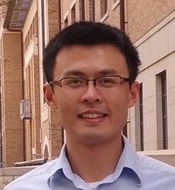Program Information
Measuring Mechanical Biomarkers of Liver Tumors Using Tagged MRI
X Xia1 , M Zhu1 , L Sun1 , M Sacks2 , G Genin3 , C Hu1 , L Guo1 , Y Feng1*, (1) Soochow University, Suzhou, Jiangsu, China (2) The University of Texas at Austin, Austin, Texas, USA (3) Washington University in St. Louis, St. Louis, Missouri,USA
Presentations
WE-FG-206-11 (Wednesday, August 3, 2016) 1:45 PM - 3:45 PM Room: 206
Purpose: Early detection of liver cancer improves patient prognosis dramatically. We propose a novel approach in which liver deformation is tracked during the cardiac cycle using tagged MRI. Strain concentrations that arise from material mismatches between the tumor and non-tumor regions were compared in patients with liver tumors.
Methods: Tagged MR images were acquired from four liver cancer patients in the coronal plane in a 3.0T scanner. In each cardiac cycle, a total of 25 time frames were acquired with a FOV of 289x359 mm2 and a resolution of 180x224. Lagrangian strain fields were calculated from displacement fields estimated from the tag lines using the HARP algorithm. Tumor and non-tumor regions of interest (ROIs) were delineated manually by a trained physician. The non-tumor ROI was defined as a region surrounding the tumor but away from the left lobe adjacent to the heart. A one-tail paired T-test was used to compare the strain distributions from the tumor and non-tumor ROIs.
Results: The strain fields reflected heterogeneity of liver mechanical properties and the nature of the loading. The left lobe had the highest strain magnitude because of its proximity to the heart. However, the maximum principal strain (E1) of the tumor ROI was significantly lower than that of the non-tumor ROI.
Conclusion: Cardiac contraction produced measureable strains in the liver, with statistically significant differences between tumor and non-tumor ROIs. Lower strains in the tumor ROIs, observed for all patients, reflected the higher stiffness of the tumor, and showed the potential of using biomechanical properties as a biomarker for tumor diagnosis. Future work will focus on the question of whether tumors that are not visible to a trained physician can be identified using these strain fields.
Funding Support, Disclosures, and Conflict of Interest: Funding supports are provided by grant BK20140356 (YF) from Jiangsu Province, grant 61503267 (YF) from National Natural Science Foundation, and by grant K511701515 (YF) from Scientific Research Foundation for the Returned Overseas Chinese Scholars, State Education Ministry.
Contact Email:

